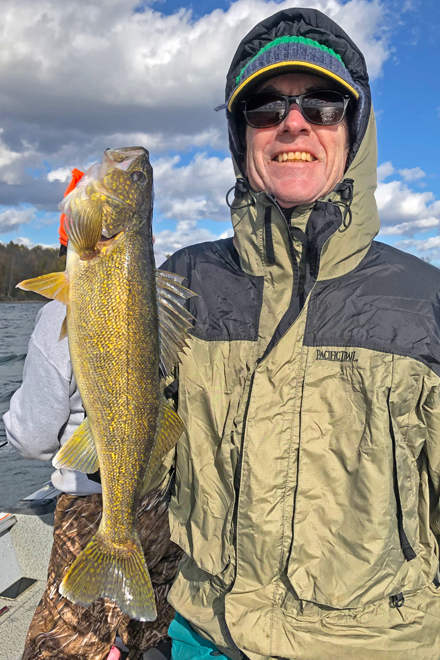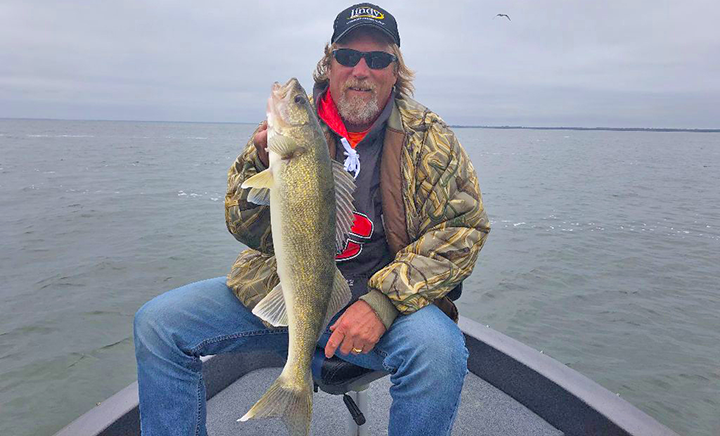Jigging raps and glow streaks have accounted for some fish this week and after dark, trolling shallow running crankbaits have produced fish as well.
No matter how we catch them, evidence abounds that walleyes are in full-scale fall migration mode. Fish of every shape and size are mixed together and the average size of fish in angler creels has greatly improved. Fish in the 14 to 15 inch range are most common, but there’s a healthy smattering of 16 to 17 fish coming in right now as well. The odds of catching large fish have gone way up too. Anglers frequently report catching 10 or more fish in the 20 to 24 inch size range on every outing.
Perch are more scattered these days, but when found, have been of quality size.
The spots that have produced best are slow tapering points in the 10 to 12 foot depth range. Most often, they are caught by anglers in pursuit of walleyes, especially on the big lake. In Cutfoot, gravel patches located along the outer edges of weed patches will produce good catches of perch, especially on cloudy, breezy days.
Jig and minnow presentations are most popular, but short leader Lindy Rigs are good too. Use #4 or #2 hook sizes, trim the leaders to about 2 feet long and tip them with larger fatheads. Troll or drift until you locate them, but then slow down and fish more deliberately, perch will respond well to vertical jigging, so stay close to the schools whenever you find them.
Panfish anglers have tried their best, but for most, crappie and bluegill action has been a disappointment. There are some small, scattered schools of panfish in both Cutfoot and Little Cutfoot, but it’s clear that populations are at low ebb right now. Some anglers do find them and have reported good catches, but the fish appear to be nomadic, rarely staying in the same spot for more than a day.
Tulibees, a fall spawning species, show up after dark on shallow flats that feature gravel or rock, their preferred spawning habitat for. Northern pike, muskies and larger bass move toward those shallow water flats and will lurk in cabbage, bulrush and other patches of green vegetation.
Casting large spinnerbaits into the green cabbage is an excellent way to catch some of the large predators. Jerk baits and large soft-plastic swim baits will also produce fish in these areas. During Late fall, the whole trick is to find the right combination of habitats, after that; there’s no temperature too cold for the fish. This pattern will last from now, into the deer hunting season.
Around the resort, the fishing action is winding down for the season. At the marina, we have the docks pulled out of the water. Our remaining guests are focused more on grouse hunting than on fishing, but we’ll be keeping tabs on some of our friends who still have fishing trips planned for themselves. We’ll keep you posted about major changes to fishing patterns, if and when they occur.
















